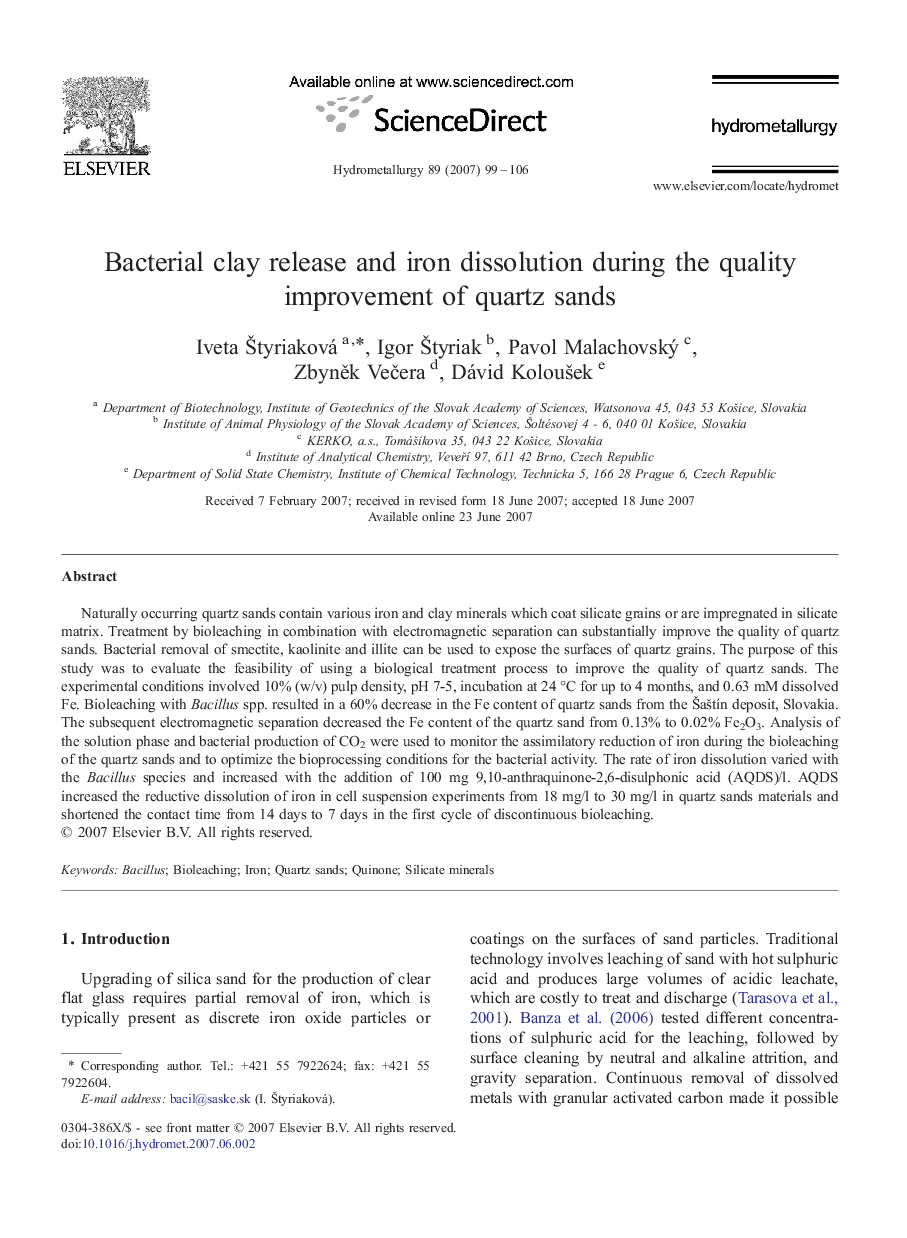| Article ID | Journal | Published Year | Pages | File Type |
|---|---|---|---|---|
| 213418 | Hydrometallurgy | 2007 | 8 Pages |
Naturally occurring quartz sands contain various iron and clay minerals which coat silicate grains or are impregnated in silicate matrix. Treatment by bioleaching in combination with electromagnetic separation can substantially improve the quality of quartz sands. Bacterial removal of smectite, kaolinite and illite can be used to expose the surfaces of quartz grains. The purpose of this study was to evaluate the feasibility of using a biological treatment process to improve the quality of quartz sands. The experimental conditions involved 10% (w/v) pulp density, pH 7-5, incubation at 24 °C for up to 4 months, and 0.63 mM dissolved Fe. Bioleaching with Bacillus spp. resulted in a 60% decrease in the Fe content of quartz sands from the Šaštín deposit, Slovakia. The subsequent electromagnetic separation decreased the Fe content of the quartz sand from 0.13% to 0.02% Fe2O3. Analysis of the solution phase and bacterial production of CO2 were used to monitor the assimilatory reduction of iron during the bioleaching of the quartz sands and to optimize the bioprocessing conditions for the bacterial activity. The rate of iron dissolution varied with the Bacillus species and increased with the addition of 100 mg 9,10-anthraquinone-2,6-disulphonic acid (AQDS)/l. AQDS increased the reductive dissolution of iron in cell suspension experiments from 18 mg/l to 30 mg/l in quartz sands materials and shortened the contact time from 14 days to 7 days in the first cycle of discontinuous bioleaching.
